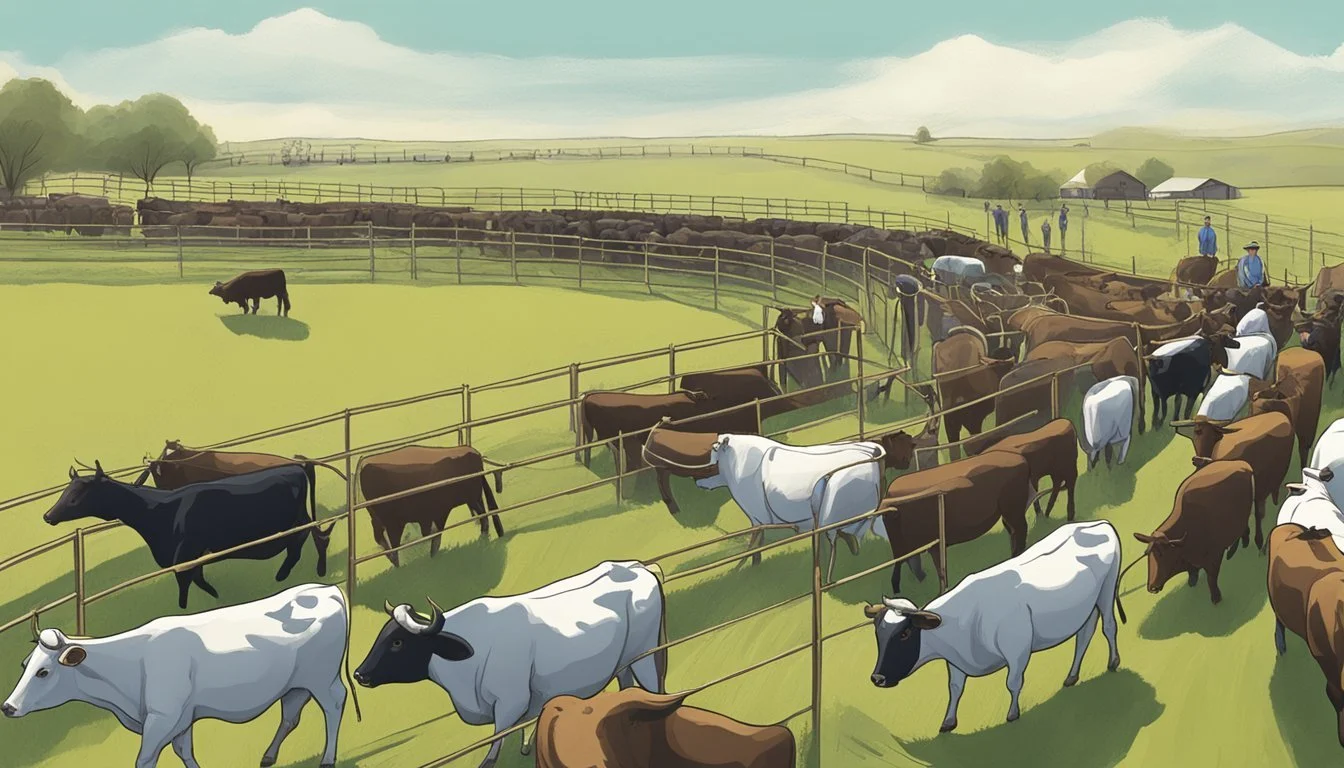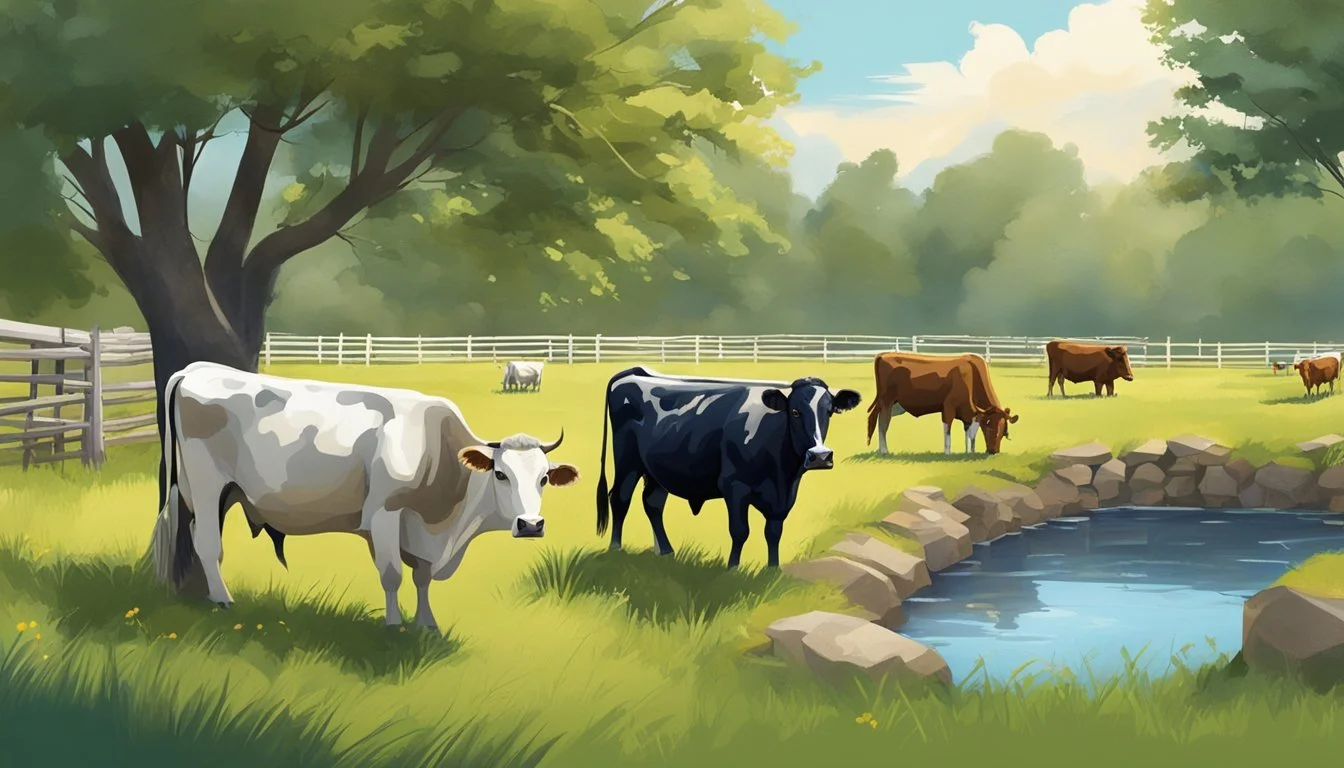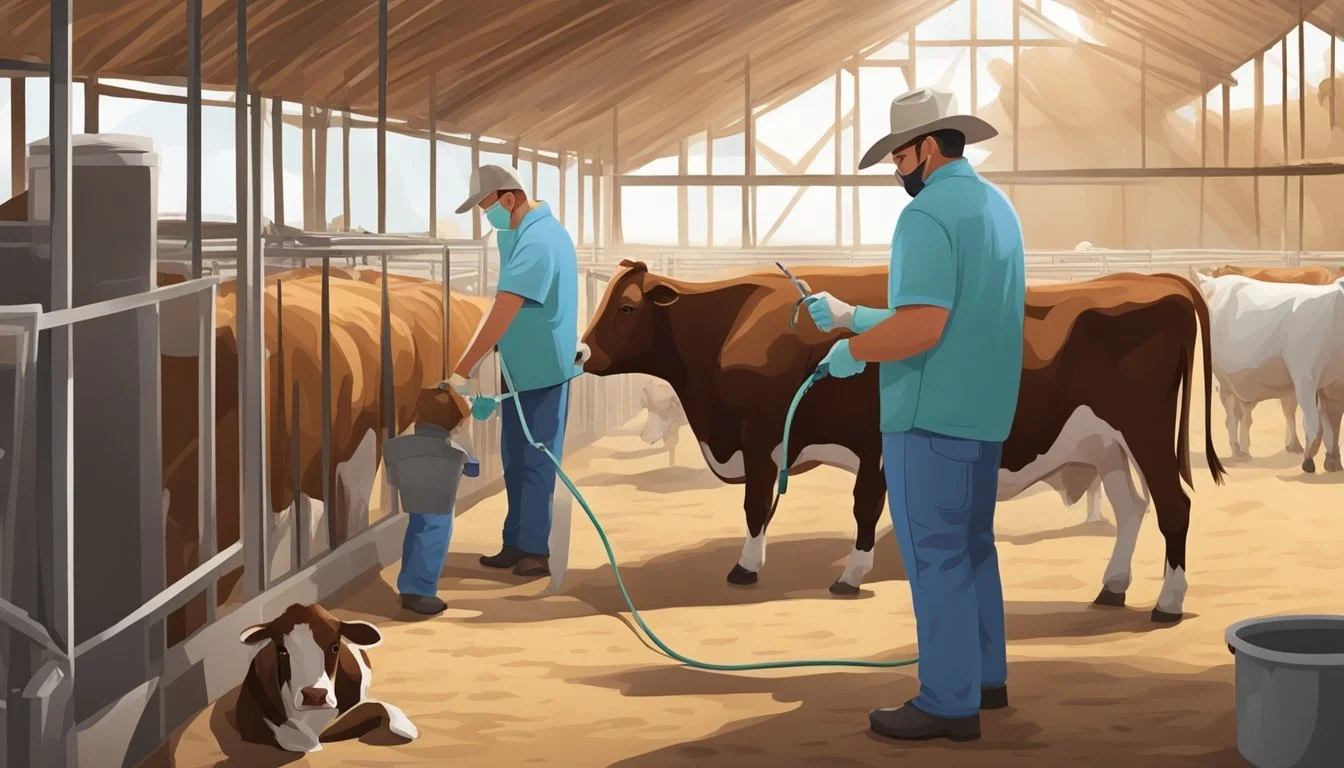How do I Manage Cattle to Ensure Food Safety and Public Health
Essential Strategies for Producers
Managing cattle effectively plays a crucial role in ensuring food safety and safeguarding public health. Proper cattle care and handling not only promote the well-being of the animals but also prevent potential health risks that can arise from the consumption of beef products. Farmers and ranchers are tasked with implementing comprehensive health management programs that address prevention, diagnosis, and treatment of diseases, contributing to the overall safety of beef as a food source.
Key practices in cattle management include maintaining strict biosecurity measures. This encompasses the hygienic storage of animal feed, control of vermin, and thorough disease prevention strategies, all of which are essential to minimizing the risk of contamination and spread of pathogens. As a cornerstone of food safety, good animal husbandry ensures that the beef products reaching consumers' tables are of the highest quality, reducing foodborne illness outbreaks and protecting community health.
Undoubtedly, effective management requires a solid understanding of cattle needs, including secure facilities that allow for safe and efficient movement and the provision of adequate nutrition. Attention to these factors touches on the ethical responsibility of producers to the animals and echoes the importance of their role in the broader context of food safety and public health.
Understanding Cattle Management
Effective cattle management involves a multi-faceted approach that prioritizes herd health, meets nutritional needs, and includes consistent veterinary oversight to ensure food safety and public health. This strategy is crucial in agriculture and livestock production, where the goal is to produce high-quality beef while maintaining animal welfare.
Importance of Herd Health
Herd health is the cornerstone of sound cattle management. Routine health practices such as vaccination programs play a pivotal role in preventing the outbreak of animal disease. By reducing stress and disease in cattle herds, producers support the overall well-being of their livestock, which directly relates to safer food products. Proven management strategies include regular health assessments and prompt diagnosis and treatment of illnesses, which together help to preserve the health of ruminants.
Nutritional Requirements
A balanced nutrition program is essential for cattle to thrive and produce quality meat. Animal feed must supply the necessary protein and energy while adhering to the specific nutritional needs of ruminants. This involves providing a mix of grains, forages, and supplements that meet the livestock's requirements at various stages of growth. Implementation of a tailored nutrition program ensures cattle receive the vital nutrients for maintaining robust health and peak productivity in livestock production.
Role of Veterinarian Consultations
Regular consultations with a veterinarian establish a Veterinary-Client-Patient Relationship (VCPR) and are integral to a successful cattle management plan. Veterinarians assist in developing a comprehensive vaccination program and are critical in the early diagnosis and treatment of potential health issues. Their expertise guides the management strategies, ensuring that the cattle receive the appropriate care, while also advising on matters such as biosecurity to mitigate the risk of disease transmission. This veterinary oversight is vital to ensure the welfare of the herd and consequently, the safety and quality of beef products.
Disease Control Measures
Effective disease control measures are critical in managing cattle to ensure food safety and public health. They hinge on rigorous identification and prevention strategies, stringent biosecurity and sanitation protocols, and a comprehensive approach to vaccination and treatment.
Identification and Prevention
Early identification of sick animals is fundamental to prevent the spread of diseases. Farmers and ranchers rely on regular monitoring and systematic review of animal health. Visible signs of illness, such as lethargy or changes in eating habits, should prompt immediate isolation of the affected animal and consultation with a veterinarian. Implementing parasite control programs is also vital to keep the herd healthy and prevent zoonotic diseases transferable to humans.
Biosecurity and Sanitation
Biosecurity involves a series of measures designed to protect a herd from infectious diseases. Key practices include controlling farm access, disinfecting equipment, and ensuring cleanliness of facilities. Sanitation protocols must be in place for the handling of manure and disposal of carcasses. Consistent farm biosecurity practices, such as thorough cleaning and disinfection of stalls and transport vehicles, are crucial to maintaining a disease-free environment.
Vaccination and Treatment Protocols
A strategic vaccination program is the cornerstone of prevention, utilizing vaccines to bolster the immune system against common bovine diseases. Vaccination schedules should be adhered to with strict attention to withdrawal periods to prevent drug residues in meat or milk. Treatment protocols typically include the judicious use of antibiotics under veterinary guidance, ensuring that any medications are used correctly and effectively to manage and eliminate infections without compromising animal welfare or consumer health.
Food Safety Considerations
When managing cattle for food production, food safety and public health are paramount. Particular attention must be paid to maintaining robust animal health, ensuring that potential residues are monitored and reduced, and implementing stringent hazard analysis and critical control point processes.
Maintaining Animal Health
Maintaining the health of cattle is critical for food safety as it directly affects public health and the shelf life of beef products. Cattle health is closely linked to the animal's immune system, which can be bolstered from birth through the intake of quality colostrum, thereby enhancing gut health. Regular sanitation practices and veterinary care are essential in preventing the spread of viruses and bacteria which can compromise the safety of the food supply.
Monitoring and Reducing Residues
Food safety is at risk from antibiotic residues originating from the use of antibiotics in medicated feed or as treatment. It's important to adhere to recommended withdrawal times before cattle are processed to ensure that drug residues, especially those from drugs like chloramphenicol, do not enter the food chain. Implementing testing protocols for antibiotic residues helps in maintaining the safety of the products and public health.
Hazard Analysis and Critical Control Points
The implementation of Hazard Analysis and Critical Control Points (HACCP) is a preventive approach to food safety, focusing on identifying and mitigating potential hazards such as biological hazards, including viruses and bacteria, in the cattle management process. It includes steps for hazard identification, monitoring of critical control points, corrective actions, and record-keeping to ensure food safety throughout the cattle production chain.
Routine Management Practices
Effective cattle management rests on diligent practices that ensure animal welfare, promote public health, and support environmental stewardship. Specific attention is focused on creating well-maintained facilities, fostering reproductive success, and ensuring humane handling during transportation.
Housing and Facility Management
Cattle housing and facility management are central to animal well-being, which in turn impacts food safety. Proper manure management is a critical concern, as it affects herd health and the surrounding environment. Facilities should be equipped with adequate equipment for cleaning and waste disposal to maintain hygienic conditions. Additionally, providing suitable bedding is essential for animal comfort and to minimize the stress that can lead to health issues.
Reproductive Management and Weaning
A well-planned reproductive strategy contributes to the genetic quality and overall health of the herd. This includes supervised breeding practices to ensure a successful mating process, as well as managing the health of pregnant cows to prepare them for birth. Post-calving, managing colostrum intake is crucial for calves as it provides necessary antibodies for disease resistance. Weaning strategies should be applied to minimize stress on calves and cows for improved welfare and productivity.
Handling and Transportation
When handling and transporting cattle, it is critical to prioritize animal welfare and minimize stress, which can adversely affect herd health and meat quality. Utilizing proper equipment and techniques during transportation can protect both the animals and handlers. Additionally, regular training for workers on humane handling techniques can further support the welfare of the animals during these processes.
Specific Aspects of Cattle Health
Managing cattle health is essential for food safety and public health. This involves a proactive approach to preventing diseases, implementing biosecurity measures, and ensuring the wellbeing of both beef and dairy cattle to safeguard against zoonotic diseases, which are transmissible to humans.
Beef Cattle Management
Beef cattle health is fundamental for optimal growth and productivity. Farmers must adhere to comprehensive health management programs which include regular vaccinations against common diseases such as rabies and tetanus. Preventative health care practices are crucial, focusing on environmental management and nutritional support to prevent bacterial infections that can compromise beef cattle health and subsequently, public health.
Dairy Cattle Health
Dairy farming necessitates rigorous attention to udder health to maximize milk production and prevent mastitis, a prevalent bacterial infection in dairy cows. Treatment protocols must include the judicious use of antibiotics, following strict withdrawal periods to ensure milk safety. Dairy cattle health plays a pivotal role in the prevention of contaminations that can lead to foodborne illnesses, such as those caused by pathogens like Salmonella and Campylobacter.
Prevention of Zoonotic Diseases
Preventing zoonotic diseases in cattle requires a broad view of herd health. Vaccines serve as a primary defense, especially in cases where diseases can be transferred to humans. To protect public health, a stringent biosecurity plan must be in place to mitigate the spread of infections. Farmers should implement herd health protocols that include regular screening and isolation of infected animals, minimizing the risk of transmission of zoonotic diseases like salmonellosis and rabies.
Environmental and Public Health Impact
Effective cattle management is crucial in mitigating environmental pollution and safeguarding public health. Focused strategies in waste management, sustainable practices, and proactive health measures can help achieve these pivotal goals.
Waste Management and Soil Health
Effective manure management is essential for protecting soil health and reducing environmental pollution. Manure, when applied correctly, can be a valuable fertilizer, contributing to sustainable agriculture by enriching the soil with nutrients and improving its structure. However, mismanagement can lead to nutrient runoff, contaminating water sources and contributing to environmental degradation.
Strategies include:
Regular soil testing to tailor manure application to soil needs
Implementing buffer zones to prevent runoff into waterways
Sustainable Livestock Production
Sustainable livestock production integrates environmental stewardship with the goal of reducing the ecological footprint of cattle farming. Practices such as rotational grazing and the use of diverse forages not only preserve pasture health but also promote biodiversity and enhance the carbon sequestration capabilities of the soil.
Key practices:
Utilizing rotational grazing systems to avoid overgrazing
Planting nitrogen-fixing forages to naturally enrich soil
Impact on Public Health
Livestock are a potential source of biological hazards and zoonosis, which are diseases transmissible from animals to humans. Ensuring animal health directly influences public health, as healthy livestock are less likely to harbor and transmit pathogens.
Public health measures include:
Implementing vaccination programs to reduce disease prevalence
Conducting regular health screenings to detect and manage outbreaks promptly
Regulatory Compliance and Best Practices
Managing cattle to ensure food safety and public health involves adhering to stringent regulatory requirements and adopting best practices that safeguard the integrity of the food supply. Effective management includes understanding withdrawal times for medications, prudent use of antibiotics and growth enhancers, and maintaining comprehensive records for traceability purposes.
Understanding Withdrawal Times
Withdrawal times are critical periods during which animals should not be slaughtered for consumption following medication or treatment. These are established to ensure that no harmful residues are present in meat products. The Food Safety and Inspection Service (FSIS) provides guidance on humane handling of livestock, which also encompasses the importance of following withdrawal periods to avoid contamination. Adherence to these times is not only a legal obligation but a commitment to consumer health.
Use of Antibiotics and Growth Enhancers
Antibiotics and growth enhancers must be used responsibly to prevent the development of antibiotic resistance. Regulations require that such substances be approved and that their use is in accordance with veterinary guidance and federal laws. The use of feed additives should promote growth without compromising food safety. Establishments are encouraged by the FSIS to employ a systematic approach to humane handling which involves judicious use of medications to ensure the health of animals, as well as the safety of meat products.
Record-Keeping and Traceability
Accurate record-keeping and traceability are the backbones of a transparent food system. They are essential for tracking the history and health of the cattle, detailing the use of antibiotics, and monitoring withdrawal times. Record-keeping enables swift response in the event of a food safety incident. The FSIS compliance guidance supports establishments in maintaining records that are thorough, up-to-date, and accessible, ensuring that all meat products can be traced back to their source, thereby bolstering public confidence in food safety.
Conclusion
Effective cattle management is crucial for the safety of food and the health of the public. They implement sustainable practices by providing necessary nourishment and clean water alongside vigilant disease prevention strategies, thereby ensuring the well-being of cattle which is directly linked to a future outlook that hopes to minimize the risk of disease transmission from farm to fork. These practices are critical for the long-term viability of food production.
Biosecurity measures play an essential role in disease prevention and are continuously refined to address new challenges as they arise. This ongoing restoration of safety protocols helps to safeguard community health. The community itself, including farmers, veterinarians, and consumers, is integral to the food safety ecosystem, as their behaviors and attitudes towards these protocols contribute significantly to the success of biosecurity measures.
Educating and collaborating with stakeholders helps solidify a unified approach to food safety and public health. Looking ahead, the enforcement of robust hygienic practices in slaughterhouses and processing plants will remain pivotal. Continuous evaluation and enhancement of these practices will further guarantee the integrity of the beef supply chain.
In summary, maintaining animal health through proactive management is a collective responsibility that benefits all. It's a cornerstone for the ongoing success of the agricultural sector and for the protection of public health worldwide.









